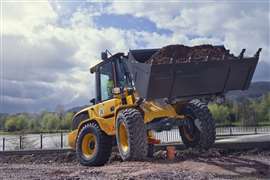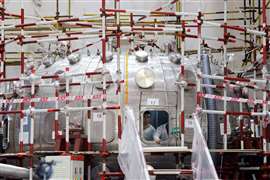2012 Olympics - Under starters orders
01 May 2008
Whichever city wins the bidding war to host the 2012 Olympics, a construction boom is sure to follow. Most recently, the 2004 Athens Games saw new roads, bridges, subways and stadia being built, while building work for the forthcoming Beijing Games in 2008 includes a dazzling array of new architecture.
Richard High reports on the plans submitted by the five cities in the running for the 2012 event.
New York's ambitious US$ 2,6 billion (€ 1,9 billion) Olympic X Plan places all but one of the venues along two intersecting transportation axes – one water, one rail. The north-south axis follows the Harlem and East Rivers; the east-west axis runs from Flushing Meadows to the Meadowlands. The Olympic Village (above), at the centre of the X, will house 16000 athletes and coaches. It will include apartments, townhouses, commercial spaces, playing fields, open plazas and a waterfront park.
The city's US$ 111.5 million (€ 85 million) glass-and-steel Olympic Stadium (below), designed by Kohn Pedersen Fox, will hold 75000 spectators. Other planned venues include a US$ 185 million (€ 141,5 million) complex for canoeing, kayaking, rowing, water polo, tennis, and archery; a US$ 77 million (€ 59 million) Bronx Velodrome and Arena for cycling and badminton; and a US$ 145 million (€ 111 million) Olympic Aquatic Centre.
An 80000-seat stadium by Foreign Office Architects is the centrepiece of London's 2012 Olympic bid (above). It sits at the heart of ambitious plans to regenerate a 202 ha site in the Lower Lea Valley into an Olympic Park. According to the architects, the design is inspired by the human form, the roof wrapping around the venue like the muscles that support the human body. The Olympic Park will also contain a velodrome, indoor sports arenas, training facilities, and an Olympic Village for athletes and officials as well as a media centre.
Zaha Hadid's design for a 20000 seat Aquatics Centre (below), will include two 50 m swimming pools and a diving pool. It will be built even if London is not selected to host the 2012 Olympic Games and Paralympic Games. The dramatic S-shaped roof is inspired by the flow of water, reflecting the building's purpose and riverside location in the Lower Lea Valley, according to the architect.
Paris' “one village, two poles” approach to the 2012 Olympics sees the majority of venues clustered on two sites. The larger pole, located just north of the city around the Stade de France, will see most of the new construction, including an aquatic centre (above). To the West a second pole will see many existing structures, including the Roland Garros Tennis Stadium, the Parc des Princes Stadium and the horse racing tracks and expansive grounds within the Bois de Boulogne park.
Paris' bid benefits from a € 5,4 billion kitty for urban renewal and infrastructure improvements throughout the city. The Olympic Village (below) will be located between two poles on one of the few remaining zones of land to be developed in the city. The land is presently covered by railway tracks. It has already been earmarked for development with lowcost housing, student housing, retail outlets, offices, and a 10 ha park.
Madrid's Olympic bid highlights its modern infrastructure – new highways, train and subway lines crisscrossing a modern urban periphery of housing developments. Most events will be held in refurbished locations along this periphery. New venues include Dominique Perrault's Olympic Tennis Centre (above), which has been described as the Caja Magica (Magic Box) of steel, wood, and glass. According to Mr Perrault, it offers “a protective skin composed of various fabrics: filtering, reflective, and opaque by day, sparkling at night.”
Other new build includes a Centre for Aquatic Sports (below), designed by Juan Jose Medina, and a covered sports pavilion and velodrome. The Olympic Village will house 16800 and will be used for housing hotels, and offices after the games.
Moscow's 2012 Olympic venues are mainly spread out over five complexes within a radius of about 10 km along the Moskva River, which will also be used to transport athletes, officials and visitors to the Games. A big selling point of Moscow's bid is its readiness; more than 2/3 of the necessary infrastructure is complete. As in the 1980 Olympics, the Luzhniki Olympic Complex and its Olympic Park will be at the core of the games. New build includes the Moscow Aquatics Centre (above).
The city's RUR 69,8 billion (€ 1,9 billion) bid includes an ambitious Olympic Village, media hub, and press centre (below). The gleaming complex, estimated to cost RUR 13,9 billion (€ 382 million), will be built in the northwest of the city and will descend via a series of terraces to the edge of the Moskova River.






